How high is your waistband?
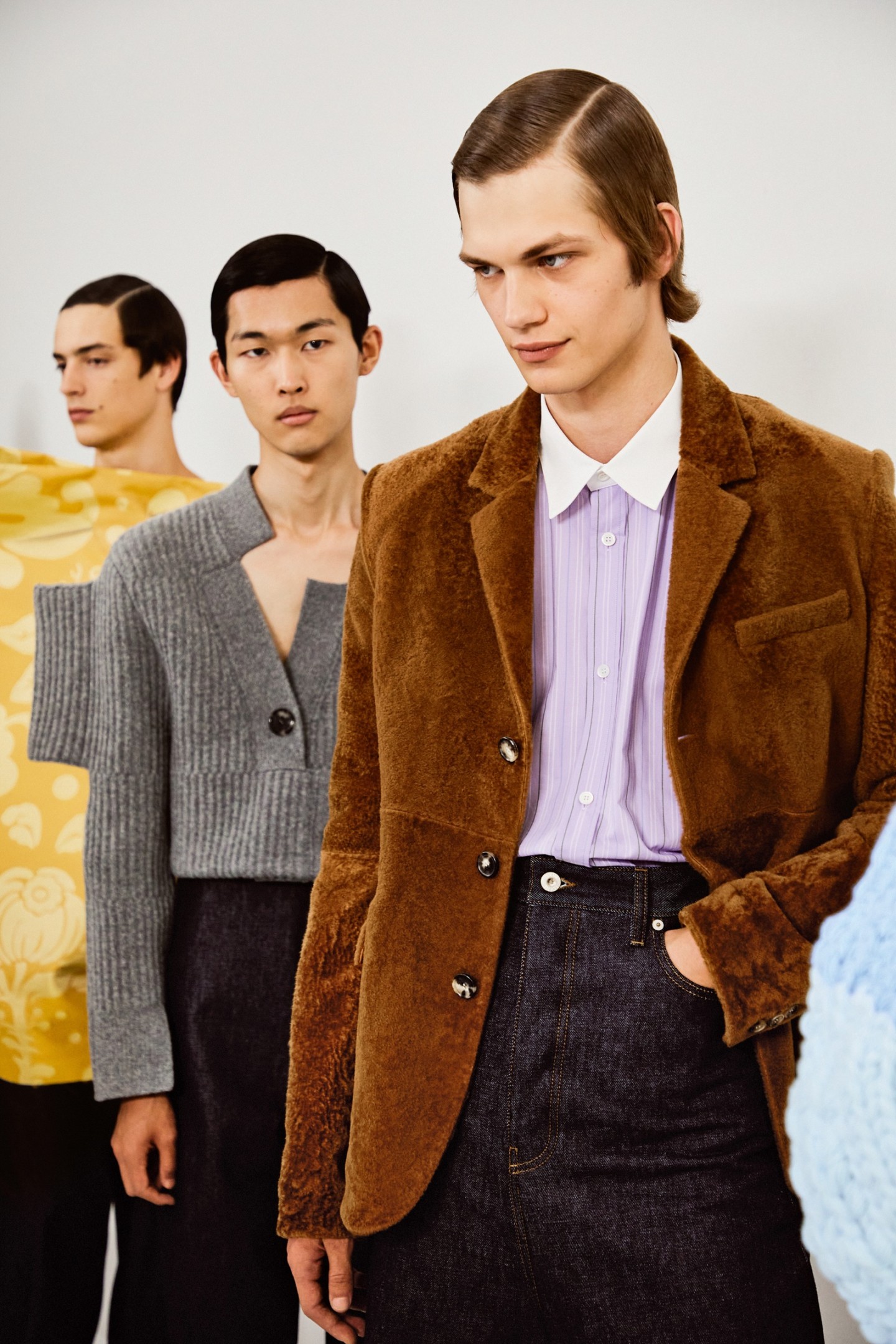
Roula Khalaf, Editor of the FT, selects her favourite stories in this weekly newsletter.
Waists are always a point of contention: expanding, contracting, slipping and sliding around the body. For something so firmly anchored in our physiques, their reflection is oddly malleable – especially at the moment, and particularly in menswear. While Rick Owens and Jonathan Anderson at Loewe tugged the waistbands of their spring trousers grandpa-high, so that they wound up and rested in a hinterland between ribcage and armpit, Miuccia Prada has slipped hers to depths not seen since the mid-2000s in her co-ed, gender-free Miu Miu shows. Underwear waistbands are flashed out, hipbones exposed, buttock cleavage threatens an airing. At his Maison Margiela haute couture show in January, John Galliano proposed a third option, his men tightly cinched in stomach-crunching corsets with padded behinds, their silhouettes resembling belle époque courtesans. Belt-tightening in difficult economic times? Perhaps.
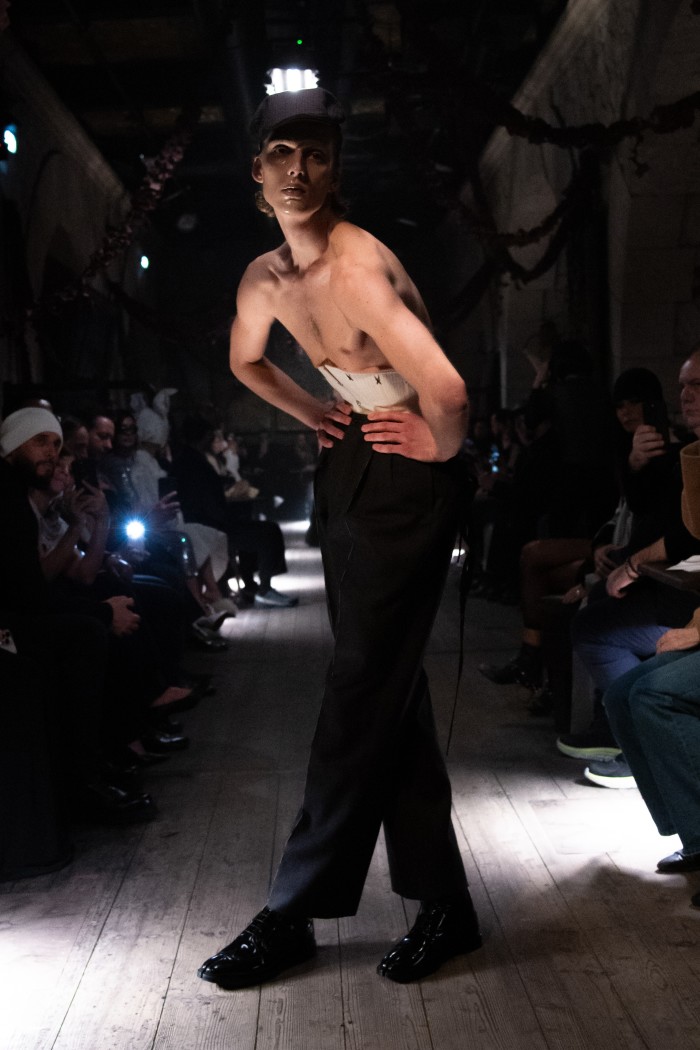
The waist is generally an obsession of female fashion, the crux of dress, often seen as a symbol of male repression. In the 17th and 18th centuries, women’s corsets in Paris were exclusively made by men; husbands laced their wives into them both as assertion of the brute force needed to whittle the waist down, and as an apocryphal insurance policy of chastity. The stories go that the complex lacing of corsets was so specific that a husband would be able to tell if his wife had been unlaced and relaced by a lover. The extremes of mid-1800s tight-lacing were, of course, also heavily criticised, as faddish fashions still are. In 1858, Punch sniped that “narrowness of waist betrays a narrowness of mind. When the ribs are contracted, it is a sure sign that the intellect is also.”
But the waist has also been a fixation for men, albeit possibly less overtly. A couple of centuries back, some men took to corsets to emulate the chiselled physiques of ancient Greek statues, which became the fashionable shape for men in the craze for neoclassical dress beginning in the 1790s, when the idealised figure of the modern man developed. And it persists today: strong legs, wide shoulders and chest, and small waist. The uniforms of Napoleon’s armies, with cut-away coats and high-rise waists, were apparently specially devised to make his troops look taller and more menacing (Napoleon syndrome at its finest). But a trim waist is about health as much as looks: the British Heart Foundation cites a waistline below 37 inches as “low risk” for heart disease, and a larger waist may also be an indicator of type 2 diabetes – men with a waistline over 40.2 inches are five times likelier to develop it. And, of course, fat trimmed to a point that abdominal muscles are visible has become both a contemporary masculine obsession and a multibillion-pound international industry, from Slendertone to Wegovy.
This season’s waistlines, from high to low
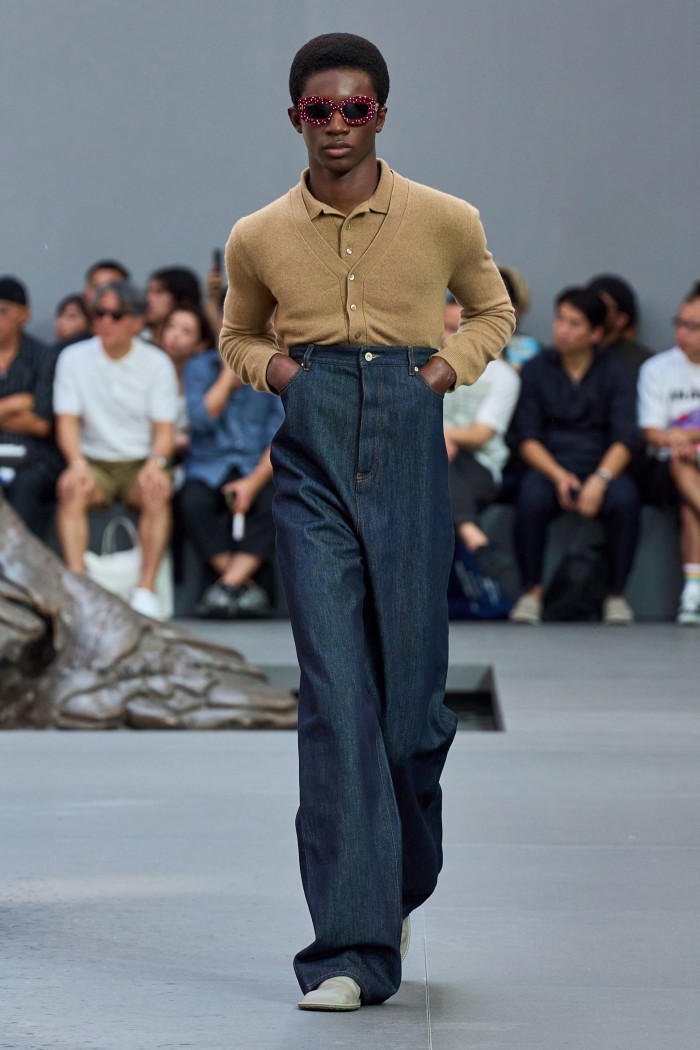
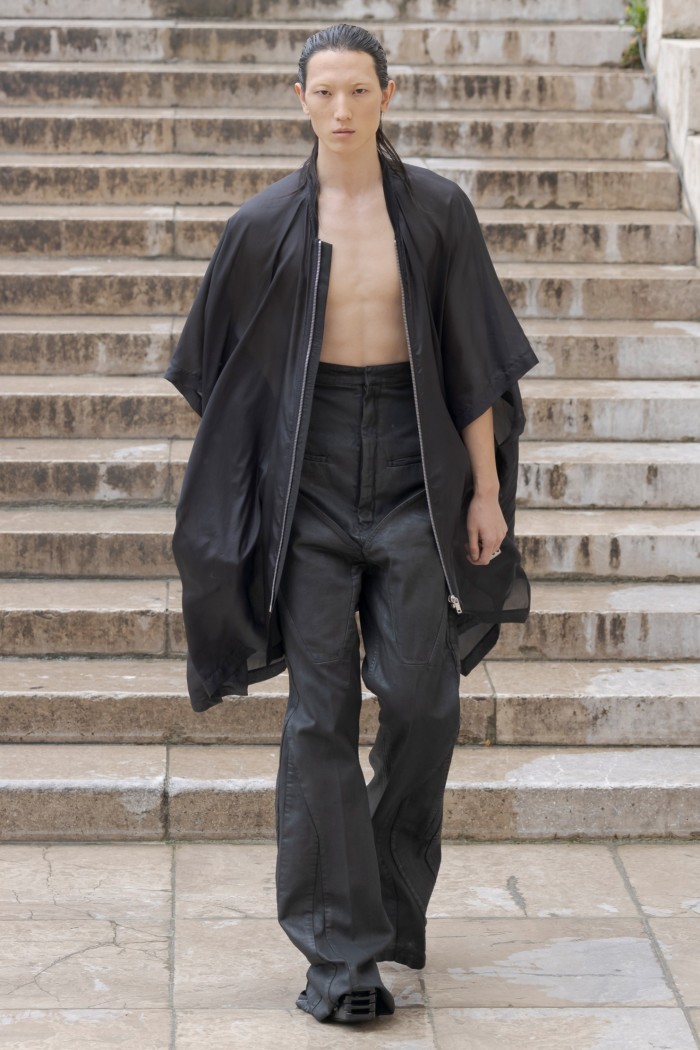
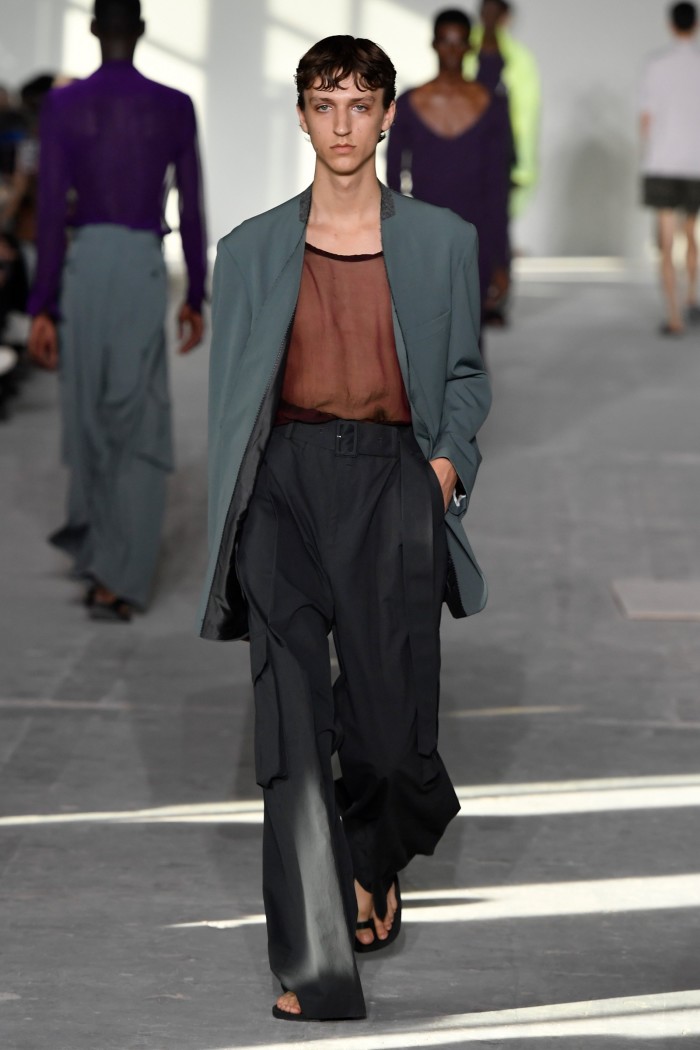
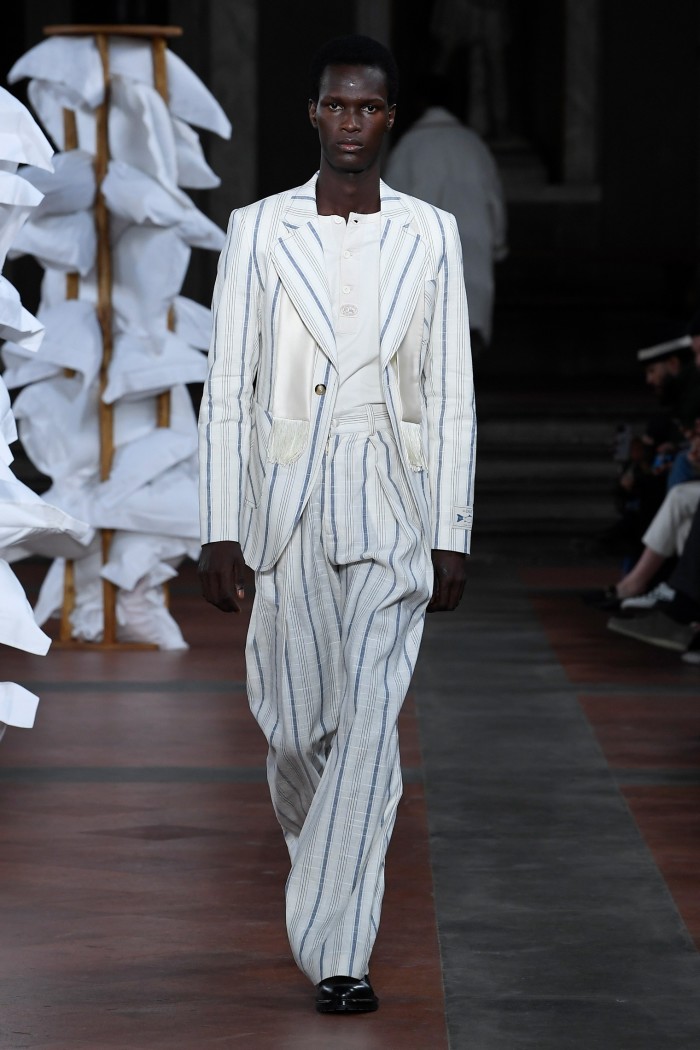
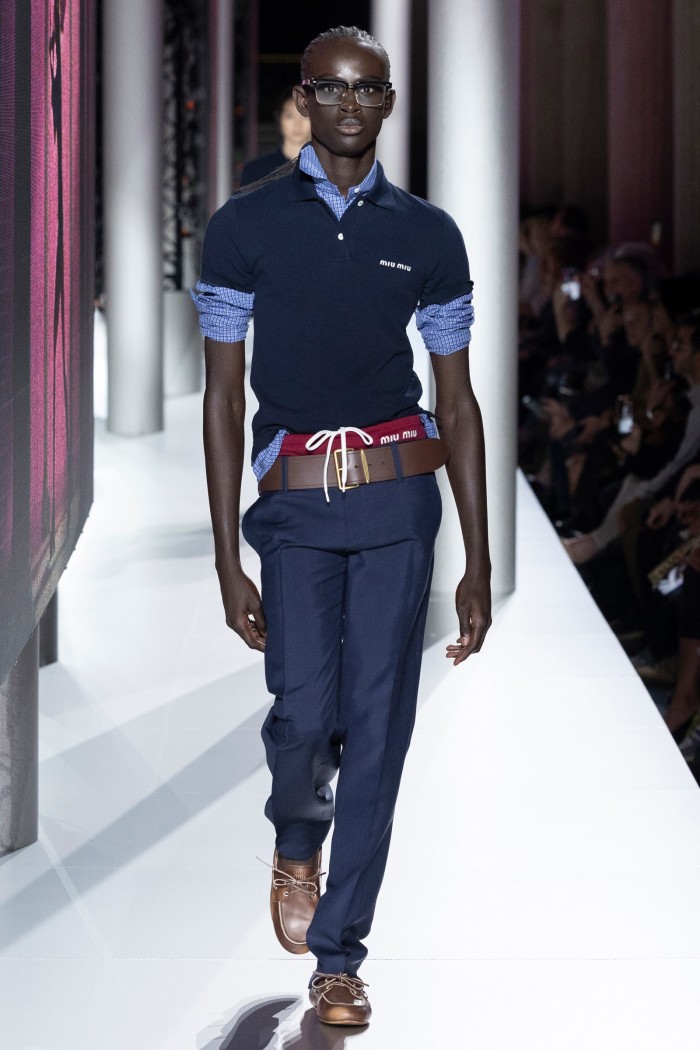
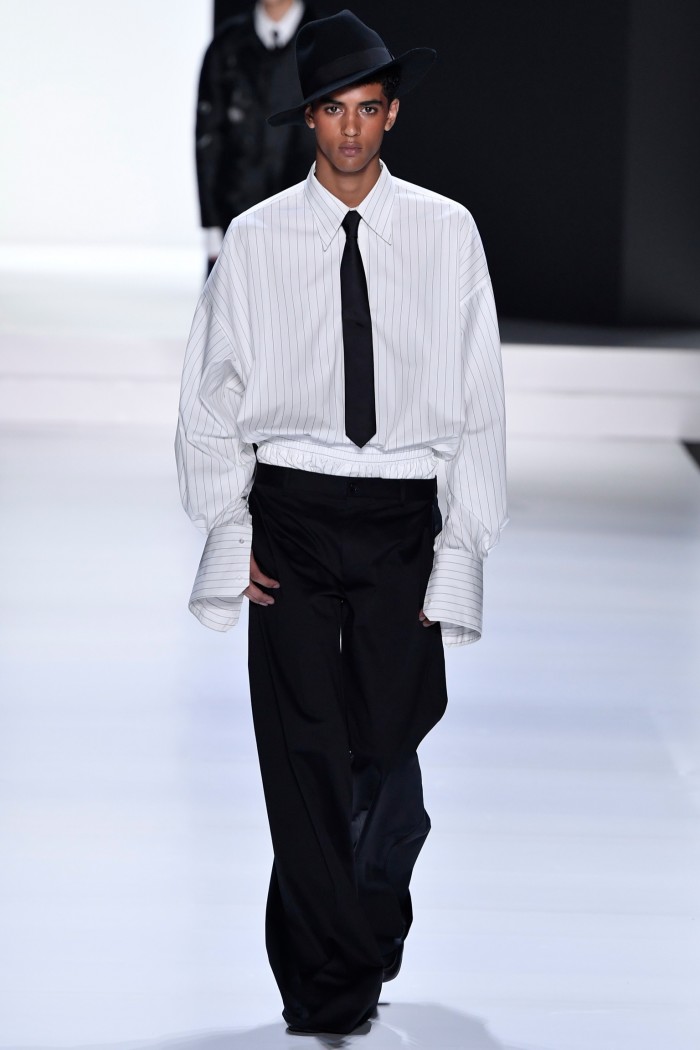
The 20th century saw the sporadic migration of men’s waists, but trends tended to stick about for a decade or so. Example: in the 1990s, trousers rode low – the most extreme example being Alexander McQueen’s “Bumster” line, based in part on the unintentional exposure colloquially known as “builder’s bum”. They were designed to elongate the torso – which McQueen pushed lower still. Unwearable for most, they were a catalyst for the decade’s ubiquitous hipsters, worn by him and her, a throwback to the “hip huggers” of the 1960s and ’70s. In both cases, those styles came straight after periods of high-slung waists – look at the trousers of the 1970s or the 1980s power suits: Patrick Bateman, the prototypical yuppie of Bret Easton Ellis’s American Psycho, describes an Alan Flusser drape suit, based on a 1930s style, where “an extended waist is cut slightly higher in the front”.
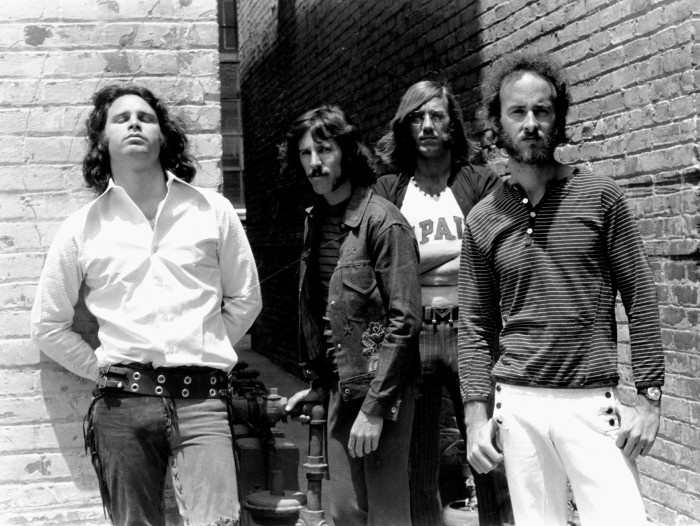
Today, however, anything goes. Gen Z seem to be enamoured of low waists for all gender proclivities, jeans riding low enough to expose underwear, such as a good few inches of boxer shorts tugged up high, or to emphasise a bared midriff. Young and cool brands – particularly French ones, such as the sexually suggestive Ludovic de Saint Sernin and Courrèges under the leadership of designer Nicolas Di Felice – are slicing trousers provocatively low. There has also been a taste among young men for cropped tops, T-shirts or even sports bras worn as highly unconventional masculine attire last summer. Bodysuits are popular too – Versace showed some in its men’s SS23 collection.
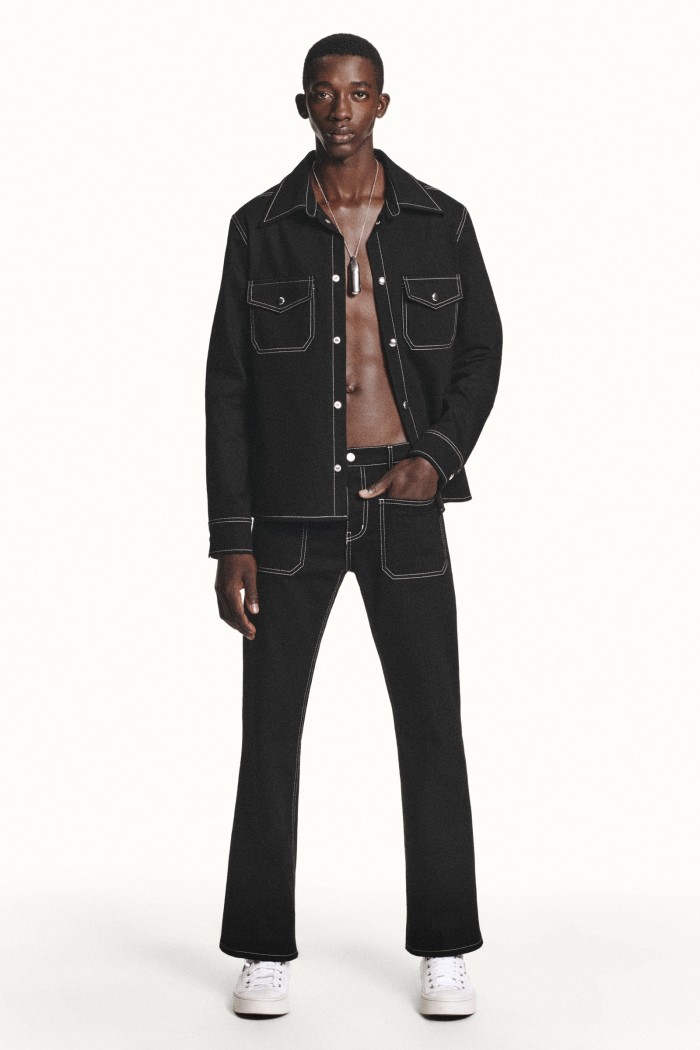
Many of the trouser and jean options that twentysomethings are sporting are vintage (which, depressingly, now means circa 2000) because contemporary trousers’ all-important rise (the distance from the bottom of the crotch seam to top of the waistband) is far too long to achieve the desired effect. It all connects with a younger generation’s positivity around their bodies and, perhaps, their confidence in showing off gym-honed physiques, especially in a sexual free-for-all unleashed following the isolation of Covid-19 (as some kind of evidence, there have been sharp increases in sexually transmitted infections across the UK and Europe post-2020).
But the opposite is true, too. The waist has rarely reached the heights proposed by Jonathan Anderson’s July 2023 Loewe show, which is beginning to hit stores now. Anderson’s waists slice across the lowest rung of the ribcage, the pockets so high placed they round the shoulders and hunch the back if one tries to shove a hand inside them. It remains the most extreme example of an idea present in multiple other collections: Dries Van Noten, Fendi, Alexander McQueen, young British designer SS Daley and Prada’s own-label menswear, co-designed by Miuccia Prada and Raf Simons. Rick Owens was the other most OTT proponent – like Anderson, his waist was sufficiently high that trousers nip in and then flare out slightly at the small of the back.
These duelling dualities can both feel fresh. One, however, fills me with dread: the low-slung option. Having spent most of my teenage years suctioned into low-rise Dolce & Gabbana stretch denims – and, occasionally, attaching shirts to the inner fly of my trousers with safety pins to ensure they didn’t untuck – I have no wish to see this style revived, at least not on me. By contrast, I have been a fan of a high waist for years. I tend to wear trousers by Ami, a French label that isn’t on the cutting edge but which proposes perfectly cut trouser styles with higher-cut waists and pleated fronts. In my opinion, they flatter most figures, cutting across a narrow point to compress and suppress a gut, as opposed to hipster styles cutting under the swell of a belly.
But which of these feel not only new, but a sign of what’s next? Sadly, I return to a truism of the industry: fashion is new in contrast with what has just ceased to be fashionable. So the gradual rise of men’s waistbands over the past 15 years will undoubtedly be met with a fall, one that already seems to be happening. Will the third wave of menswear waist-shifts be a move in five years to those handspan Margiela waists? Maybe start investing in corsets…
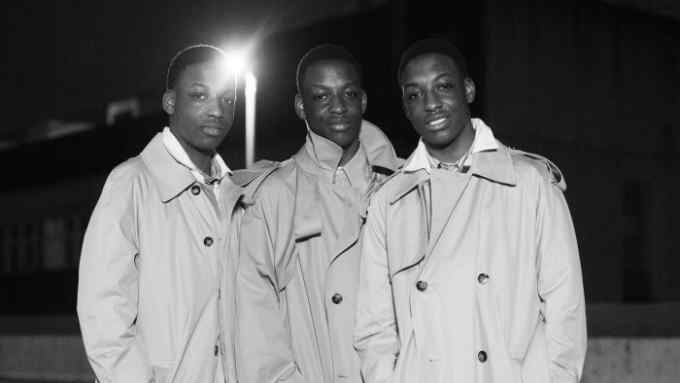
Comments